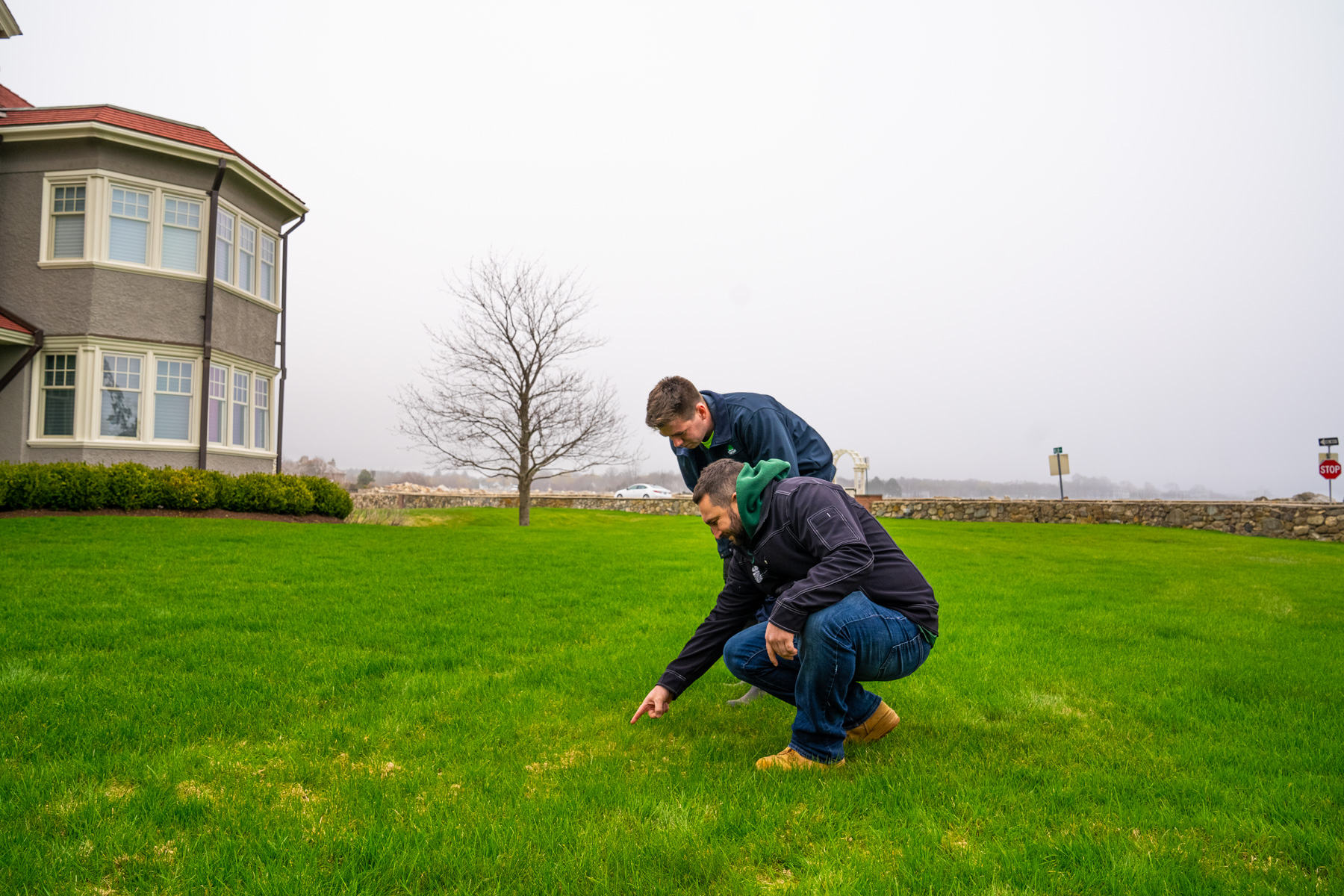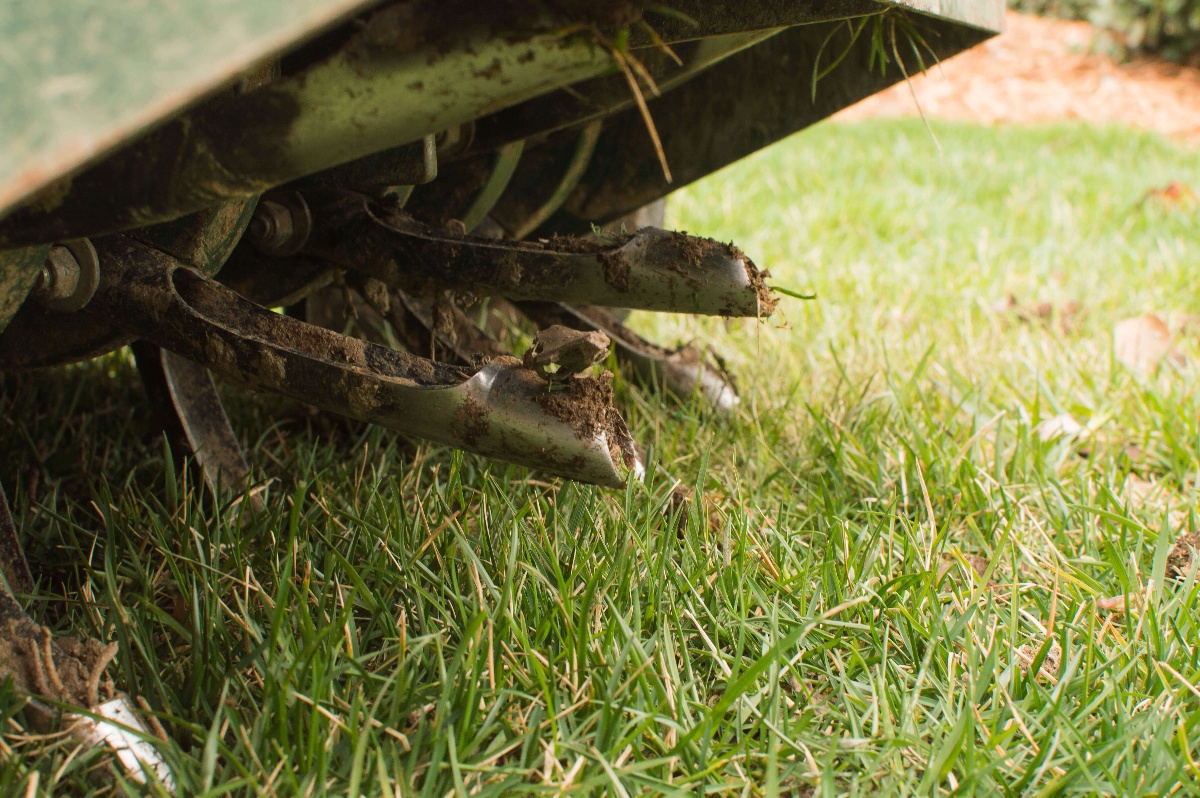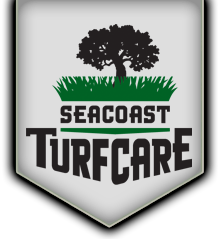
Understanding Lawn Snow Mold: Causes, Symptoms, and Treatment
While lawns go into a state of dormancy in the winter, they can still struggle with a number of potential cold-weather issues like winter desiccation, crown hydration, and plow and salt damage.
Another common winter lawn problem is snow mold on the grass. As the weather begins to warm and the snow melts away, you might notice patches of pink, gray, or white growth on the lawn.
This is likely snow mold, caused by a fungus that thrives under the snow.
In this article, we’ll dive into everything that you should know about lawn snow mold. Although the sight of it can be alarming, it is often not something to be too concerned about.
What is Snow Mold?
Snow mold is a type of fungal lawn disease that forms beneath the snow. There are two main types of lawn snow mold: pink and gray.

Pink snow mold can be more damaging than gray. That’s because gray snow mold typically only damages the blades of grass whereas pink snow mold can actually affect the crown and roots.
Your lawn might have both pink and gray snow mold growing together. Snow mold has a webby appearance.
What Causes Snow Mold?
Snow mold typically occurs when there is heavy and thick snowfall that sits on the grass for a long period of time. Snow mold is most likely if snowfall occurs before the ground has completely frozen.

The trouble with lawn snow mold is that it grows beneath the snow, unseen. You won’t actually realize that you have a problem with snow mold until the snow melts (which may not be until the spring).
How to Get Rid of Snow Mold?
We know that you probably also want to understand how to treat snow mold.
If you find snow mold growing when the snow clears, we recommend gently raking that area to loosen any matted-down grass. The goal is to allow the soil to dry out as quickly as possible.
In many cases, snow mold damage will remedy itself. As new healthy grass starts growing and you start mowing the lawn again, you might find that any evidence of snow mold is gone. Sometimes, it just takes a bit of time. Performing that gentle raking and helping the soil dry out will help.

However, if you have areas of the lawn that have been severely damaged, it’s possible that you might require aeration and overseeding to restore those spots where grass has died. This will help new, healthy grass to grow and fill in those areas.
Lawn aeration is also good for keeping the soil aerified and better able to dry out quickly. A soggy lawn is going to be more prone to fungal diseases.
Lawn aeration involves pulling small cores of soil from the ground and depositing them back on the lawn where they will break down and recycle nutrients back into the soil. This helps your lawn to breathe!
Going forward, you’ll want to take steps to try and prevent lawn snow mold in the first place as that is truly the best way to avoid trouble. We’ll talk about that next.
How to Prevent Snow Mold?
There are a few steps that you can take to try and prevent snow mold from growing during the winter season.
- For one, we recommend making your final mow of the season shorter. This can help prevent grass from getting matted down which encourages the growth of this fungus.
- As you prepare your lawn for winter, you’ll also want to make sure that you pick up all leaves and debris from the grass before the first snowfall. Leaves that are left lying on the lawn can create an “incubation zone” for snow mold to grow. Leaves can also become an invitation for critters to take up residence in your yard. As the weather gets colder, rodents and other pests look for sources of shelter. You don’t want your yard’s fallen leaves to become their new home.
- Keeping up with regular lawn aeration can also make a difference in keeping your lawn healthy and better able to dry quickly when it does get wet.
- Finally, if you have any drainage issues in your lawn, you’ll also want to address those. As we mentioned, a soggy lawn makes fungal growth more likely.
Even when you do everything right, lawn snow mold can sometimes still grow. If we’ve had a particularly heavy snow season, sometimes snow mold is inevitable.
As we’ve said, it’s not a reason to panic.
While it can look alarming, in many cases it really does remedy itself. As the sun starts to dry out your lawn and healthy grass begins to grow again, you’ll likely see your lawn bounce back.
Reviving Your Turf with Lawn Care Services in Southern NH, ME, and MA
As lawns come out of their state of dormancy in the spring, it can feel like there’s a lot to bounce back from. The winters here in New England can be tough and lawns are subject to a lot of potential problems.
The good news is that you don’t have to figure all of this out on your own. We know that lawns can be stressful but we’re here to help!
Don’t be afraid to talk to your lawn care professional about your concerns with snow mold on your lawn. They can provide advice and guidance as you deal with this common issue.
If you choose to work with Seacoast Turf Care, you should know that it is our goal to take away your worries by handling your lawn care needs.
That means letting go of your winter worries and feeling confident that you are in good hands. It doesn’t mean that you’ll never have any problems. But you can be sure that we’ll be there to help implement the best solutions and advice. We’re here to be your partner in success.
Want to learn more about what makes us a great choice for your lawn care needs? At Seacoast Turf Care, we service NH towns near Stratham, North Hampton, Exeter and many more. Get lawn care pricing for your Southern NH, Southern Maine, or Northeastern Massachusetts property.



